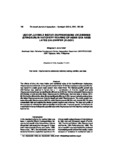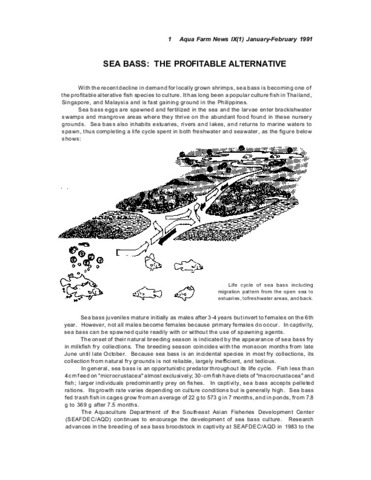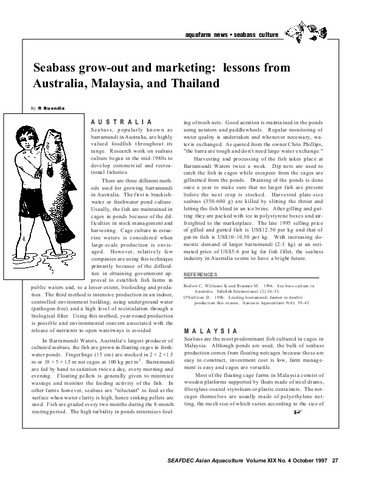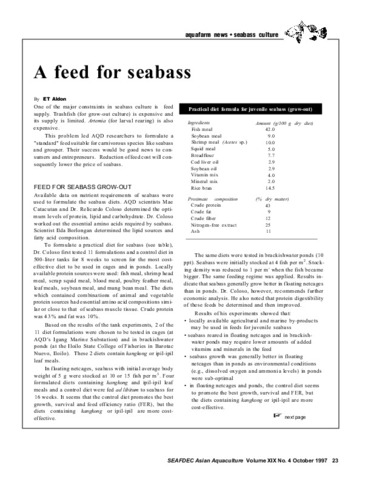Use of juvenile instar Diaphanosoma celebensis (Stingelin) in hatchery rearing of Asian sea bass Lates calcarifer (Bloch)
- Global styles
- MLA
- Vancouver
- Elsevier - Harvard
- APA
- Help

View/
Date
2001Author
Page views
1,527ASFA keyword
AGROVOC keyword
Taxonomic term
Metadata
Show full item record
Share
Abstract
The effects of size, dry mass intake and nutritional value of the brackishwater cladoceran, Diaphanosoma celebensis, on the growth and survival of 15-30 day sea bass (Lates calcarifer) larvae reared in a static green water system were determined. The highest specific growth rate (29.4%/day) was attained in larvae fed a 1:1 combination of Artemia nauplii and adult Diaphanosoma but it was not significantly different (p>0.05) from fish fed only adult Diaphanosoma (28.8%/day) or only juvenile instar Diaphanosoma (28.6%/day). Survival rates of larvae (92.4-99.0%) fed the different live diets did not significantly differ (p>0.05). Larvae markedly prefered juvenile instar Diaphanosoma over Artemia nauplii and adult Diaphanosoma. The crude protein contents of juvenile Diaphanosoma (58.7%), adult Diaphanosoma (58.3%) and Artemia (56.7%) were substantially high and satisfied the dietary protein requirements of larvae. The fatty acid profile of the sea bass fry reflected the lipid composition of the live diet. Improved growth, survival and dry mass intake in larvae indicate the potential of juvenile Diaphanosoma in the hatchery rearing of sea bass larvae.
Suggested Citation
de la Peña, M. R. (2001). Use of juvenile instar Diaphanosoma celebensis (Stingelin) in hatchery rearing of Asian sea bass Lates calcarifer (Bloch). The Israeli Journal of Aquaculture-Bamidgeh , 53(3-4), 128-138. http://hdl.handle.net/10862/1895
Type
ArticleISSN
0792-156XCollections
- Journal Articles [1258]
Related items
Showing items related by title, author, creator and subject.
-
Sea bass: The profitable alternative
Southeast Asian Fisheries Development Center, Aquaculture Department (Aquaculture Department, Southeast Asian Fisheries Development Center, 1991) -
Seabass grow-out and marketing: lessons from Australia, Malaysia, and Thailand
Buendia, Romeo (Aquaculture Department, Southeast Asian Fisheries Development Center, 1997) -
A feed for seabass
Aldon, E. T. (Aquaculture Department, Southeast Asian Fisheries Development Center, 1997)One of the major constraints in seabass (Lates calcarifer) culture is feed supply. Details are given of work conducted at AQD regarding the formulation of a 'standard' feed suitable for carnivorous species like the seabass ...





